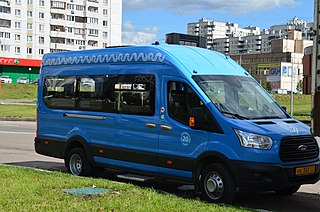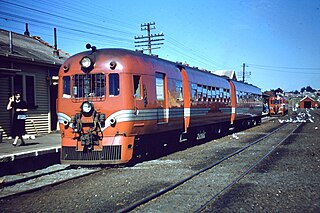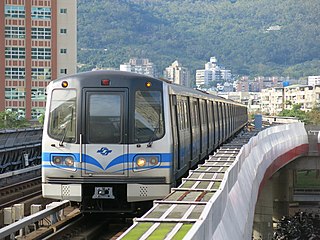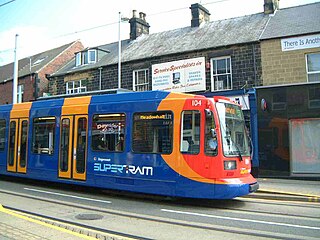

In urban public transport, provision is made for standing passengers, often called straphangers [1] [2] [3] [4] or standees, [5] to rationalize operation and to provide extra capacity during rush hour.


In urban public transport, provision is made for standing passengers, often called straphangers [1] [2] [3] [4] or standees, [5] to rationalize operation and to provide extra capacity during rush hour.
On crowded rapid transit urban lines, while most travelers may be seated during off-peak services, only a limited proportion will be seated during the peak services. The longer the journey, the less willing passengers are to stand. On intercity rail or coach services, the willingness among passengers to stand is often low, or it may even be prohibited, with reserved seating to ensure that all passengers can be seated.
In aviation, safety measures require all passengers and crew to be seated during take-off and landing, so airlines do not allow passengers to travel without a seat. However, in 2010, Ryanair, a low-cost airline proposed a "vertical seat" design for use by standing passengers on its aircraft. [6]
The seated-to-standing ratio is the ratio between the number of passengers that can be seated and the number of standing passengers on a public transport vehicle. A higher standing ratio allows for more passengers in a given area, but detracts the perceived quality of the transport, in particular over long distances. [7] This metric is normally limited to urban mass transit, due to intercity transport normally only offering seated travel. On longer haul services, bilevel cars are often used to allow for increased seating, though this increases the dwell time at stations, making increased seating ratio versus service time tradeoffs.
Passengers per square metre is a quality of service metric used to determine the standard of comfort provided to standing passengers in a transportation vehicle. Multiplying this number by the total available standing area on a vehicle gives the total standing passenger capacity. Bus services in Europe operate at about four passengers per square metre. [8]
Standing passengers are susceptible to suffering falls and other injuries, particularly elderly people. [9] Shorter people and children may not be able to reach ceiling-mounted handles, straps, or rails. Porous cloth straps are hard to clean, and are being replaced by rubber or plastic straps, and metal fixtures often made of stainless steel.[ citation needed ]
Various types of handholds are provided for standing passengers:

A van is a type of road vehicle used for transporting goods or people. Depending on the type of van, it can be bigger or smaller than a pickup truck and SUV, and bigger than a common car. There is some variation in the scope of the word across the different English-speaking countries. The smallest vans, microvans, are used for transporting either goods or people in tiny quantities. Mini MPVs, compact MPVs, and MPVs are all small vans usually used for transporting people in small quantities. Larger vans with passenger seats are used for institutional purposes, such as transporting students. Larger vans with only front seats are often used for business purposes, to carry goods and equipment. Specially equipped vans are used by television stations as mobile studios. Postal services and courier companies use large step vans to deliver packages.

A railcar is a self-propelled railway vehicle designed to transport passengers. The term "railcar" is usually used in reference to a train consisting of a single coach, with a driver's cab at one or both ends. Some railway companies, such as the Great Western, termed such vehicles "railmotors".

A low-cost carrier or low-cost airline is an airline that is operated with an especially high emphasis on minimizing operating costs and without some of the traditional services and amenities provided in the fare, resulting in lower fares and fewer comforts. To make up for revenue lost in decreased ticket prices, the airline may charge extra fees – such as for carry-on baggage. As of April 2020, the world's largest low-cost carrier is Southwest Airlines, which operates primarily in the United States, as well as in some surrounding areas.
Various terms are used for passenger railway lines and equipment; the usage of these terms differs substantially between areas:

Marshrutka or marshrutnoe taksi or routed taxicab, are share taxis found in Eastern Europe and the republics of the former Soviet Union. Usually vans, they drive along set routes, depart only when all seats are filled, and may have higher fares than buses. Passengers can board a marshrutka anywhere along its route if there are seats available.

A stanchion usually is a sturdy upright fixture that provides support for some other object. It can be a permanent fixture.

The NZR RM class 88-seaters were a class of railcar used in New Zealand. New Zealand Government Railways (NZR) classified them as RM (Rail Motor), the notation used for all railcars, numbering the 35 sets from RM100 to RM134. They were the most numerous railcars in NZR service. Their purchase and introduction saw the demise of steam-hauled provincial passenger trains and mixed trains, and was part of a deliberate effort to modernise NZR passenger services at a time of increasing competition from private motor vehicles. Being diesel powered and lighter the railcars were less expensive to operate and able to maintain quicker timetables, although became plagued with mechanical and electrical problems, with a number of the class eventually being turned into depowered locomotive-hauled carriages and reclassified as the AC class "Grassgrubs".
The X'Trapolis 100 is a class of single deck electric multiple units part of Alstom's X'Trapolis family of trains, operated in Melbourne, Victoria, Australia and Valparaíso, Chile.

The Limerick–Rosslare Main Line is a railway route in Ireland that linked the city of Limerick on the Atlantic coast with Rosslare Europort on the coast of the Irish Sea. It also serves the city of Waterford, and at Limerick Junction it connects with the Dublin–Cork railway line.

A passenger train is a train used to transport people along a railroad line. These trains may consist of unpowered passenger railroad cars hauled by one or more locomotives, or may be self-propelled; self propelled passenger trains are known as multiple units or railcars. Passenger trains stop at stations or depots, where passengers may board and disembark. In most cases, passenger trains operate on a fixed schedule and have priority over freight trains.

Red Arrow was a brand name given to several former London bus limited stop routes used as high frequency commuter services in central London. The last Red Arrow services to operate were routes 507 and 521, with the brand being retired altogether in September 2009, only being briefly revived in May 2016 to commemorate its 50th anniversary. On 29 April 2023, routes 507 and 521 were both withdrawn.

The 900/800 class railcars were diesel multiple units built by the New South Wales Government Railways between November 1951 and November 1960.

Public transport is a system of transport for passengers by group travel systems available for use by the general public unlike private transport, typically managed on a schedule, operated on established routes, and that may charge a posted fee for each trip. There is no rigid definition of which kinds of transport are included, and air travel is often not thought of when discussing public transport—dictionaries use wording like "buses, trains, etc." Examples of public transport include city buses, trolleybuses, trams and passenger trains, rapid transit and ferries. Public transport between cities is dominated by airlines, coaches, and intercity rail. High-speed rail networks are being developed in many parts of the world.

The 5000 series is a series of Chicago "L" car built between 2009 and 2015 by Bombardier Transportation of Plattsburgh, New York. A $577 million order for 406 cars was placed in 2006. In July 2011, the CTA ordered 300 more cars for $331 million as an option on the first contract.
The vertical seat is an airline seat configuration, created in 2003 by Airbus, canvassed to Asian carriers in 2006, and promoted by Ryanair as well as Spring Airlines in 2010. The configuration involves standing passengers travelling while being braced in position.

The public light bus (PLB) or minibus is a public transport service in Hong Kong. It uses minibuses to provide quicker transport and to serve areas that standard Hong Kong bus lines cannot reach as efficiently. The vehicles are colloquially known by the code-switch Van仔 literally "van-ette".

The Rail Vehicle Accessibility Regulations 2010 is a Statutory Instrument in the United Kingdom. It aims to set standards designed to improve accessibility for disabled people on light rail passenger vehicles.

The Liverpool Overhead Railway opened on 6 March 1893 with 2-car electric multiple units, the first to operate in the world. Each lightweight car had a 60 horsepower (45 kW) motor that took power from a third rail. In 1902, these were replaced with two 100 horsepower (75 kW) motors, which reduced the travel time. After 1945, some trains were modernised, replacing the timber body with aluminium and plywood and fitting power operated sliding doors under control of the guard. The trains were all removed from service when the railway closed in 1956. An original example was retained by the Museum of Liverpool and an example of a modernised carriage was stored at the Electric Railway Museum, Warwickshire, now closed.

A crush load is a level of passenger loading in a transport vehicle which is so high that passengers are "crushed" against one another. It represents an extreme form of passenger loading, and normally considered to be representative of a system with serious capacity limitations. Crush loads result from too many passengers within a vehicle designed for a much smaller number. Crush loaded trains or buses are so heavily loaded that for most passengers physical contact with several other nearby passengers is impossible to avoid.
The following outline is provided as an overview of and topical guide to public transport: